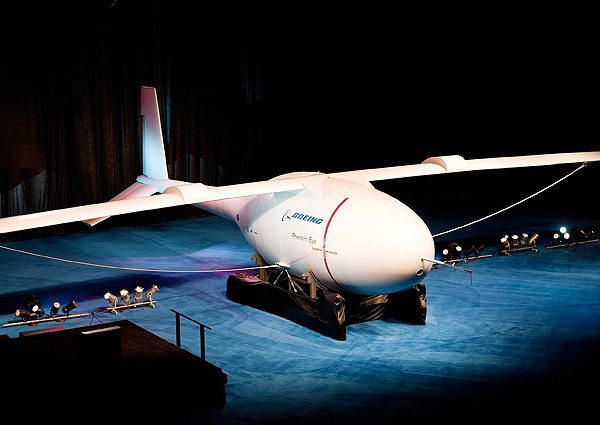Boeing today announced that the Phantom Eye high altitude long endurance (HALE) unmanned aerial vehicle has conducted its first medium-speed taxi test. The hydrogen-powered aircraft is designed for persistent intelligence, surveillance and reconnaissance (ISR), and communications.
The test was conducted March 10 at Edwards Air Force Base in coordination with the NASA Dryden Flight Research Center.
Phantom Eye, traveling atop its launching cart system, reached speeds of up to 30 knots as ground teams relayed directions and information using Boeing’s advanced Common Open-mission Management Command and Control (COMC2) software.
“The aircraft performed well and the data collected will help populate our models,” said Drew Mallow, Boeing Phantom Eye program manager. “This test brings us one step closer to our first flight.”
With its 150-foot wingspan, Phantom Eye is designed to fly at an altitude of up to 65,000 feet and stay airborne for up to four days while carrying a 450-pound payload.
“Phantom Eye’s hydrogen-powered propulsion system, matched with its exceptional fuel economy and robust endurance, ushers in a new realm of possibilities for potential customers’ long-endurance ISR missions,” said James Dodd, Advanced Boeing Military Aircraft vice president, Boeing Phantom Works.
A unit of The Boeing Company, Boeing Defense, Space & Security is one of the world’s largest defense, space and security businesses specializing in innovative and capabilities-driven customer solutions, and the world’s largest and most versatile manufacturer of military aircraft. Headquartered in St. Louis, Boeing Defense, Space & Security is a $32 billion business with 62,000 employees worldwide.










